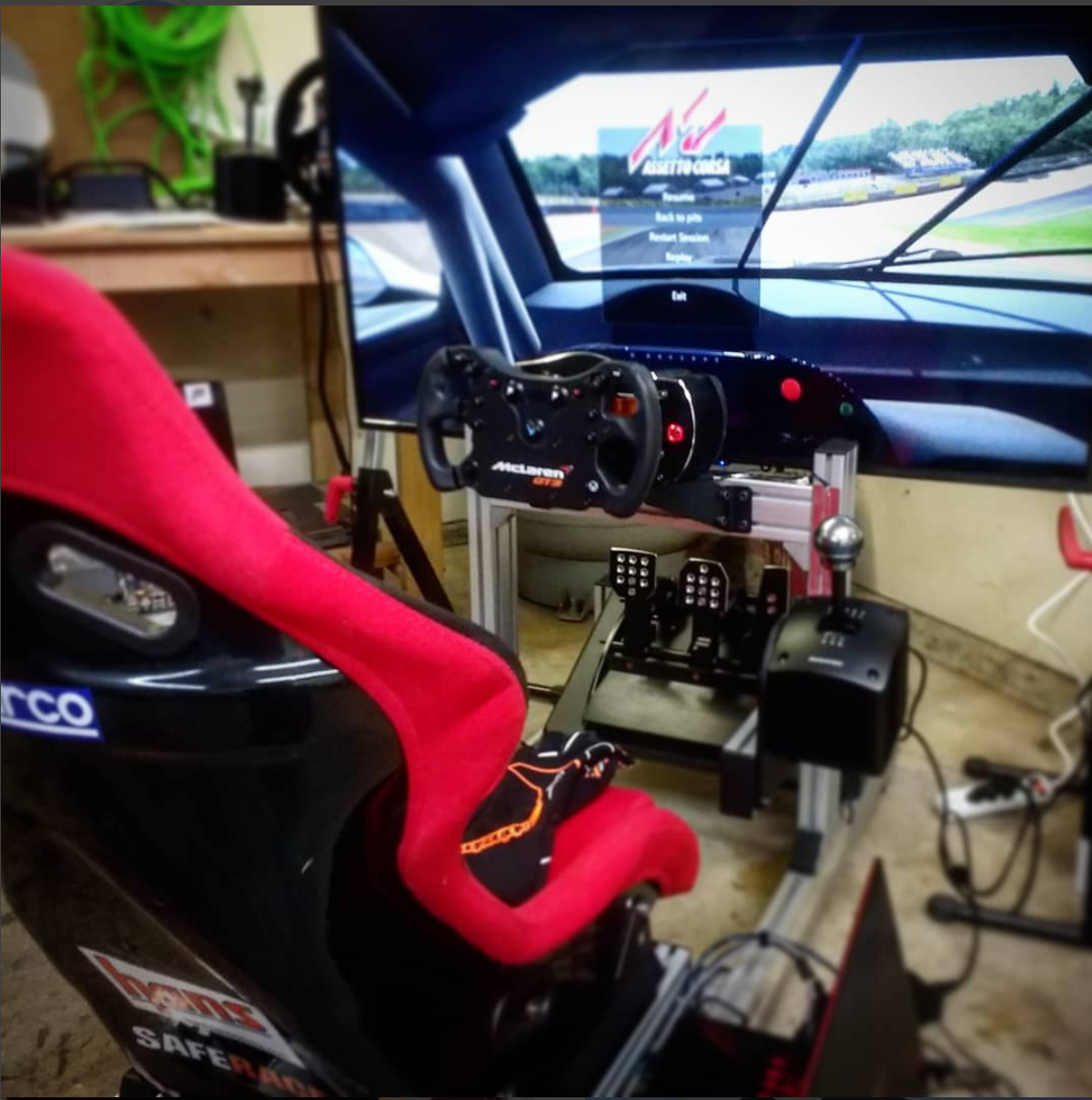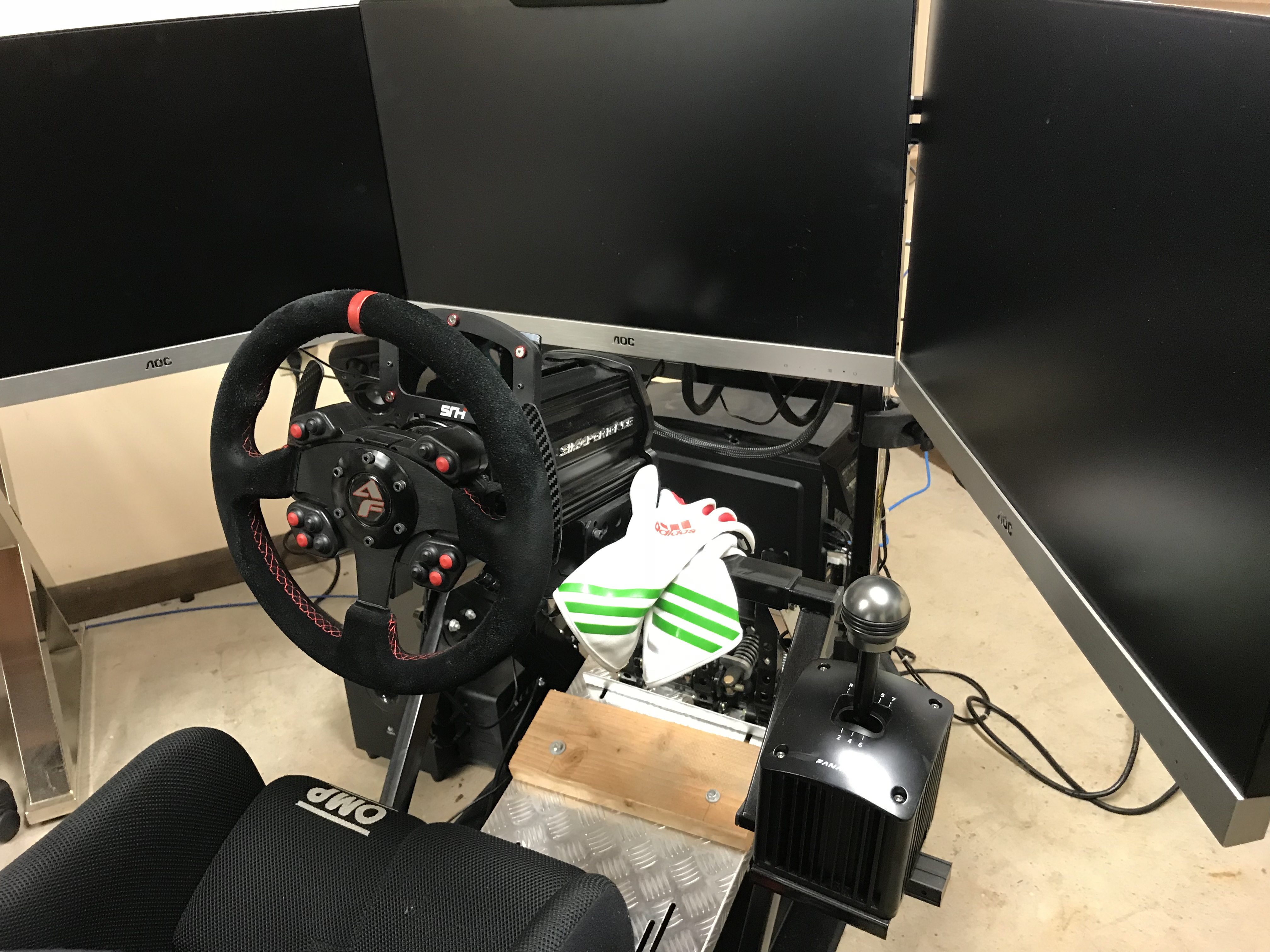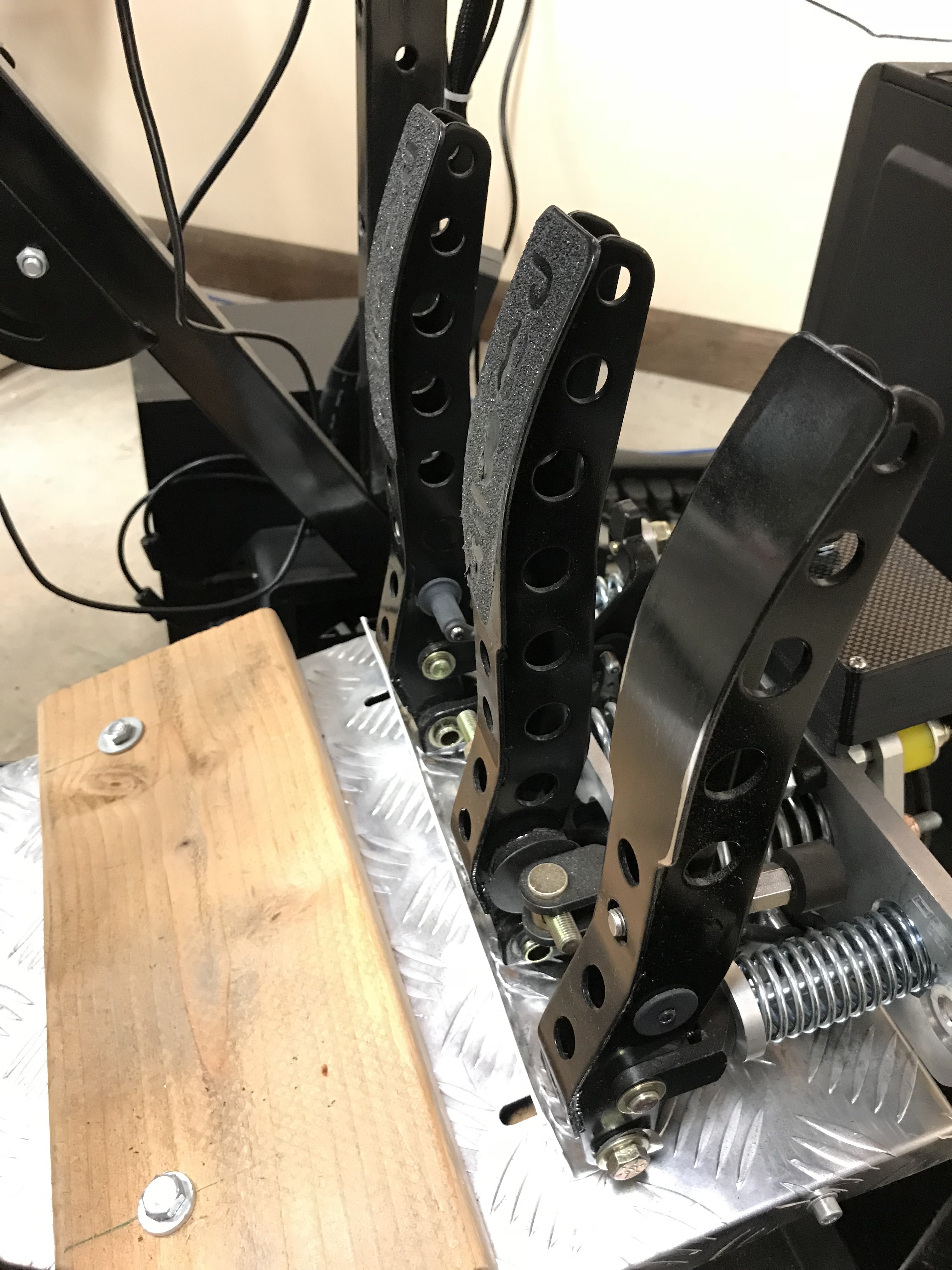
With the explosive growth of simulator driving for not just training but actual competition, big time dollars and rewards attached, we get more and more questions about how to get started building a simulator setup and specifically, what to get.
Still wondering if simulator driving is really that worth it? Check out this podcast from Speed Secrets and this video about William Byron – now a driver for Hendricks Motorsports, who didn’t grow up driving karts or cars but rather, simulators.
This can be a complicated space because there are a lot of options. In this second post, let’s go down one specific path base on what we think is the most important question.
Why do you want a simulator setup? I want to use simulators to accelerate my driving or car in the real world.
eSports is exploding in popularity with games like Madden, Fortnite and Halo being at the center global gaming tournaments. Gamers from around the world train and compete against world-class gamers at in-person and virtual tournaments all over the world and for real money.

There are even several universities who have athletic scholarships for student-gamers. Racing competitions in eSports is no exception – competing and winning real money for simulator driving is real and it’s here.
This post is focused primarily for those who want currently or are planning to drive in the real-world and want to use simulators to accelerate their development. Getting to the track in the real-life to get quality seat time, driver coaching, and car development is not cheap. Simulators are an excellent path to do all of those things more often, at a lower cost and increasingly with direct correlation to what happens in the real world.
Recommendation: Go with a PC-based simulator like iRacing, Assetto Corsa (PC edition), Assetto Corsa Competizione or RFactor 2. Yes, Gran Turismo and Forza have had tournaments where the winners compete in real life for chances to be race car drivers as a profession but those are the exceptions.

Things to get:
There is no way to get around it – this will be more expensive because you are trying to replicate real life, of which a lot of what happens in real life is about how the car and track sound and feel of your inputs.
- A quality PC that can keep up with the display you want. The main thing here is a decent processor and ram but the beefiest graphics card you can get and the bar at this level is a little higher than at the ‘simulator only’ level. Here are a couple options:
- A PC desktop with a decent i7 processor, 16GB+ of RAM and a 6GB Nvidia GeForce GTX1070 or equivalent from AMD. Get the absolute best graphics card you can get – it will be worth it.
- iRacing, Assetto Corsa, Assetto Corsa Competizione, RFactor 2 or Project Cars 2.
- Yes, there are a ton more simulators out there, but these are the heavy hitters.
- The best peripherals you can buy because you want motorsports grade hardware:
- Fanatec: this is the absolute lowest level of quality you should get.
- The ClubSport v2.5 steering hub and BMW GT wheel are top-notch.
- The ClubSport V3 pedals are ok and good with the rubber bump stops that improve the brake pedal feel.
- The Clubsport SQ v1.5 H-pattern shifter is one of the best H-pattern shifters available.
- Mix and match: You can mix and match components to get the best from each category. Here are a couple other examples:
- SimXperience Accuforce hub and steering wheel
- Derek Spears Design Pedals – Uses real Wilwood pedals and pedal box components.
- Richmotech – is a component maker and dealer of a lot of higher-end components.
- What about Thrustmaster and Logitech? Don’t waste your time.
- Fanatec: this is the absolute lowest level of quality you should get.
- Display that will give you the best field of view (FOV) you can afford. Here are my preferences, in order:
- 24”+ triple screens – I personally have an older version of this model but it doesn’t have pre-drilled holes for monitor stands, which sucks.
- 27”+ curved screen
- Virtual reality headset (e.g. Oculus Rift or HTC Vive Pro)
- 40”+ single monitor/TV: this is not really an option. If you want to really focus on improving your real-world driving, you need an immersive experience.
- Sim rig with a seat
- A sim rig/cockpit is no longer optional. You need the seating position, field of view and access to the driver controls to be as close to real-life as possible and you can only really do that with a proper and sturdy sim rig. Here are a few options:
- Next Level Racing GT Ultimate V2 Racing Simulator Cockpit
- DOF Reality – makes a very low cost sim chassis that also includes motion.
- RSeat – makes all kinds of sim chassis with and without motion. Most importantly, they look very stout.
- Sim Lab – we recently got a GT1 Evo chassis and are loving the sturdiness and adjustability
- A sim rig/cockpit is no longer optional. You need the seating position, field of view and access to the driver controls to be as close to real-life as possible and you can only really do that with a proper and sturdy sim rig. Here are a few options:
- Motion platform
- Yes, it’s now close to a requirement. Driving in race cars on tracks is a rough experience where you’re getting tossed around as you go over bumps and curbs. The feeling of the car pitching forward when you hammer the brakes, the car getting upset as you take too much curb or the backend coming loose when you carry too much speed into a corner or get on throttle too quickly – you need to feel that. All of those things in real life tell you what’s going on and they remind you of the mortal consequences of having more bravery than talent.
- Want everything integrated and ready to rock? There several companies who sell fully built and ready to rock motion simulators. Here are a few:
Gama’s Motion Simulator
Pros:
- There are few other things that will accelerate your driver development than quality motion simulator seat time.
- The quality of your experience is completely dependent on the components you put into your PC and peripherals. If you want better graphics, get a better graphics card. Want better FOV, change your display setup. Want an even more immersive motion experience with real-time data streaming and coaching? You can do that too!
- The force feedback and vibration capabilities of the steering hubs and transducers on the market are amazing. You can buy components and configure then so that you feel everything on your feet, butt, abs, legs and hands as you do in real life. You will have a generally authentic steering input and feedback experience.
- There is a growing number of retail locations where you can rent seat time on very high-end simulators and get coaching from top-level coaches.
Cons:
- No longer “welcome”, you are right in the middle of the slippery slope! It is now the cost of a small car to get a decent motion simulator up and running. It starts in the $5-10k range and goes into the $50-75k range. There are simulators well above those ranges but those are reserved for commercial applications.
- Driving consistently well in a simulator is hard and even more difficult with motion. Most people are lucky to end their first 30 minutes in a simulator simply not crashing or losing control. Stick with it!
- Pretty much everything is more complicated to setup. There is almost no plug and play experience for any component. You need to connect them, install drivers and configure/calibrate.
- The physics and tire model are better than the console world but vary across simulator platforms.
- There is even more you can buy, which can be good – for example, buttkickers are sound based vibration devices that give even more feedback to the seat, pedals and generally corners of the car.
Example setups: I’ve only built one motion rig and would be considered “entry level” for a quality motion experience.
- Example 1: Entry level, motion with a rig: Everything here is exactly what I have on my current motion sim but my graphics card cost a bit more a year ago than they do today.
- Total Cost: $8,741.39 (doesn’t include taxes or shipping)
- Custom built desktop gaming PC w/Nvidia GTX1080Ti: $1,200
- iRacing subscription: $80/year
- SimXperience Accuforce Hub and steering wheel w/button box: $1,299.00
- Fanatec SQ Shifter: $199.50
- Derek Spears Design (DSD) pedals: $895.00
- OMP Racing seat: $799.00
- Logitech 5.1 Speaker system: $49.95
- Next Level Racing Ultimate Cockpit: $800.00
- Next Level Racing V2 Motion Platform: $2,999.00
- 3x AOC 24” gaming monitors: $139.98 x 3 = $419.94
- Total Cost: $8,741.39 (doesn’t include taxes or shipping)
If I knew then what I know now, what would I do differently?
The Next Level Racing cockpit is pretty good, and I don’t entirely regret my purchase decision, especially because their motion platform integrates seamlessly BUT if I were building another rig (which I will in the next 6 months or so), I would try the DOF motion cockpit because I don’t love the following about the Next Level Racing cockpit:
- The flex in the chassis, especially under heavy braking. First, it flexes and since it wasn’t designed to flex in the first place, the amount of flex is variable. This isn’t great when you are trying to hit your marks lap after lap or making minor adjustments to brake application to shave off tenths of seconds.
- Lack of adjust ability. Having the seating position, steering wheel, shifter and pedals in the perfect position for your body is critical to driving fast and driving consistent. Any unnecessary mental energy used to figure out where things are or having to adjust to not having the controls in natural/intuitive positions will make you go slower. The NLR rig is essentially fixed in place after you set things up and for me personally, we had to add a wood block to the pedal box so that my heels could stay planted and reach properly. The manual shifter position is okay, but I really wish I could move it another inch or two closer to me. Lastly, with the motion set, the slider doesn’t work.
You listed the Fanatec pedals but you have some other fancy looking pedals. What gives?
Yes, when the Thrustmaster wheel hub failed after about a year of use, I upgraded to the Fanatec hub but I wanted as close to the real-world race car pedal feel as possible. On this rig I currently have the Derek Spears Designs pedals which are amazing and use real Wilwood racing pedal box components. You don’t need these if you are only simulator racing. I also have two other rigs with the Fanatec V2.5 Clubsport pedals, both the floor mounted and the hanging configurations. They are solid and when you add the bump stops for the brake pedal, they are close to the DSD pedals but still substantially lower cost.














